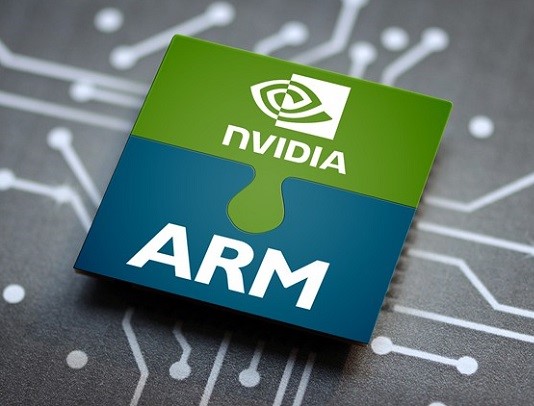
20 September 2020 – U.S. chip company NVIDIA’s $40-billion acquisition of UK-based chip designer Arm from Japan’s SoftBank Group, which was announced on September 13th, comes at a time when AI computing, networking and data processing are more important than ever. This acquisition has a big possibility of pushing a dramatic change or improvement in IoT, PC and server architecture. All of these areas and technologies I have covered for 20+ years so it is somewhat an exciting time for me. But then, I do not get out much 🙂
Since both NVIDIA and Arm are leading vendors in their own territories, the complementary synergies between the two are expected to make the deal a win-win for both. At the same time, the deal will create more concern for other stakeholders.
Arm is a company that almost monopolizes the SoC core design in several segments. However, Arm is not involved in chip manufacturing or creates any chip with its own brand. Instead, it licenses IP, instruction set architecture (ISA) and other technologies to other chip companies, allowing them to design their own unique SoCs for a variety of applications. In the past, the low power consumption capability of Arm’s IP allowed it to grow and dominate in the mobile device market. Currently, almost all mobile phones, tablets and IoT devices use Arm technology. In recent years, it has gradually expanded to high-speed computing devices such as PCs, and data centers.
NVIDIA specializes in graphics processing technology and is one of the leading GPU vendors. Thanks to the fast-growing demand for AI and high performance of its GPU, Nvidia has become one of the leading vendors both in edge computing and data center in the past few years.
While NVIDIA and Arm have quite complementary businesses, they also share common goals, such as the server and data center businesses. By combining Nvidia’s AI capability and Arm’s complete ecosystem for edge devices, NVIDIA hopes to empower more edge devices, including smartphones, PCs, self-driving cars, robots and 5G devices, to be able to process inference.
• From the perspective of the server market, Arm plans to launch a series of Neoverse microarchitectures in an attempt to expand its service beyond the mobile device. However, Arm’s progress in the server segment remains slow because of its weakness in AI. Therefore, the acquisition by NVIDIA will accelerate the use of Arm chips in data center.
• From the perspective of the computer market, Arm recently introduced the Cortex X1 CPU core, which is designed for flagship smartphones and other high-performance mobile devices. It is expected that NVIDIA will support Arm to design powerful cores for x86 platforms. However, this is something that some of the competitors will not like. A new Arm core with higher computing power will also shorten the gap with existing x86 CPU vendors.
• From the perspective of the mobile phone market, NVIDIA is unlikely to launch its own smartphone APs. NVIDIA believes that it is a software company. Therefore, licensing could be more in line with its current direction. Just as Arm’s licensing business, NVIDIA could license its GPU and AI cores to other SoC vendors, along with other Arm CPU cores. This will enhance the image processing and AI capabilities of Android phones and shorten the gap with Apple’s SoC. Also, this will enhance the competitiveness of Arm’s IP.
The AIoT market is undoubtedly the initial target of NVIDIA-Arm merger, but the data center is the final. NVIDIA’s AI started in the cloud and is moving quickly to the edge, such as warehouses, hospitals, streets and airports. With the deployment of AI capability moving from the cloud to edge, smart sensors connected to AI computers can improve the user experience and save cost. These small autonomous machines will compute continuously and connect to powerful cloud data centers in every corner of the world.
However, NVIDIA’s merger with Arm may run into hurdles, such as opposition from other related companies and antitrust examination in different regions.
• Arm’s existing partners may switch to RISC-V, which is a new free and open-source architecture, if they feel that Arm’s integrity and independence are being compromised. Counterpoint believes that although the RISC-V Foundation already has many important players and RISC-V is already being used to design MCU, the gap between it and Arm is still quite large and will take time to build comprehensive ecosystem. Therefore, it is almost impossible to replace Arm on mobile phones in the next five years. In addition, RISC-V will still face the same problem as Arm — how to remain in a neutral position while keeping business growth.
• According to NVIDIA, the proposed transaction is subject to customary closing conditions, including the receipt of regulatory approvals from the US, UK, China and the European Union. The transaction is expected to be completed in around 18 months. The uncertainties of this deal mostly stem from the current trade dispute between the US and China. As the deal will change the jurisdiction of Arm, from the UK and Japan to the US, the Chinese approval to the transaction becomes important. In addition, Arm is still locked in a dispute over the control of its Chinese subsidiary. Counterpoint believes NVIDIA will need to have more communication as well as guarantees and concessions to resolve the issue. The good news is that NVIDIA has a lot of investment and partners in China, making it easier to get approvals.
CONCLUSION
Through this acquisition, NVIDIA wants to enhance the AI capabilities of Arm-based IoT endpoints to achieve smart devices everywhere, while continuing to consolidate its position in the data center segment. However, the acquisition is still challenging and unpredictable and may take longer than expected to produce the desired result. I suspect the regulatory hurdles will be a nightmare.